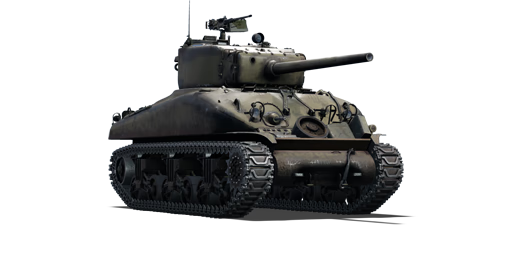The M4A1 (76) W Sherman is the first variant of the late-generation Medium Tank M4 (Sherman) family. These were essentially up-gunned and upgraded models of the early generation M4A1 variant, with a modified T23 turret housing the new 76 mm M1 tank gun and split loader's hatches, and "wet" ammunition stowage to reduce the risk of ammo rack detonation. The M4A1 (76) W featured an upgraded oil gear turret traverse mechanism and a simpler stabilizer. The M4A1 (76) W tank was the first of the late-generation M4 Sherman variants to see action in the U.S. Army. These tanks were shipped to depots in England in time to be assigned to units for Operation Neptune, also known as the Normandy landings. It never saw combat, though, because no one wanted them at the time. The primary reason was a lack of time for training on the M4A1 (76) W before the landings, and no one wanted any supply difficulties on the M1 tank gun's ammunition for the logistic lines. However, the M4A1 (76) W and other 76 mm-armed Shermans would see heavy combat in Israeli hands after the Second World War.
Introduced in Update 1.45 "Steel Generals", the M4A1 (76) W provides much-needed improvements in armour penetration and firepower over previous early-generation M4 Sherman variants. Ballistic properties and armour-piercing characteristics have clearly improved. However, the M4A1 (76) W retains the same overall protection and armour thickness as the early-generation M4 Sherman variants, which begins to feel inadequate at its BR. Most enemy tanks will easily penetrate the M4A1 (76) W at any range, as the hull's upper front armour plate can hardly withstand any shells at its rank. Players have to alter their playstyle and take advantage of the M4A1 (76) W's mobility to cover strategic areas early in the battle. Exchanging shots with adversaries is not recommended because the M4A1 (76) W's protection is below average for its rank.

















